Rajasthan
Quick guide to exploring the mighty Rajasthan
Map out the opulence of the Maharajahs in a spectacularly royal escape
Sprawling palaces set amidst quiet lakes, magnificent forts erected on stony hills; the Land of the Kings is a wonder to behold, the crowning glory of India’s medieval era. Here, warrior kings sat on intricate carpets, cradling tigers as pets, their gilded throne halls constantly resounding with colourful and opulent celebrations. Some of these songs can still be heard today in the form of folk music, for the glory of Rajasthan remains strong.
Rajasthan traces its princely roots amongst the fragmented kingdoms of the region then—Mewar, Jaipur, Marwar, Alwar and Bikaner, to name a few. The royal grounds of the state have witnessed diplomacy and war through the centuries, ceding and then gaining forts to the Mughals, Marathas and the British. The entanglement of these cultures is apparent in many of Rajasthan’s architectural edifices, which seem to overshadow one another in form and function.
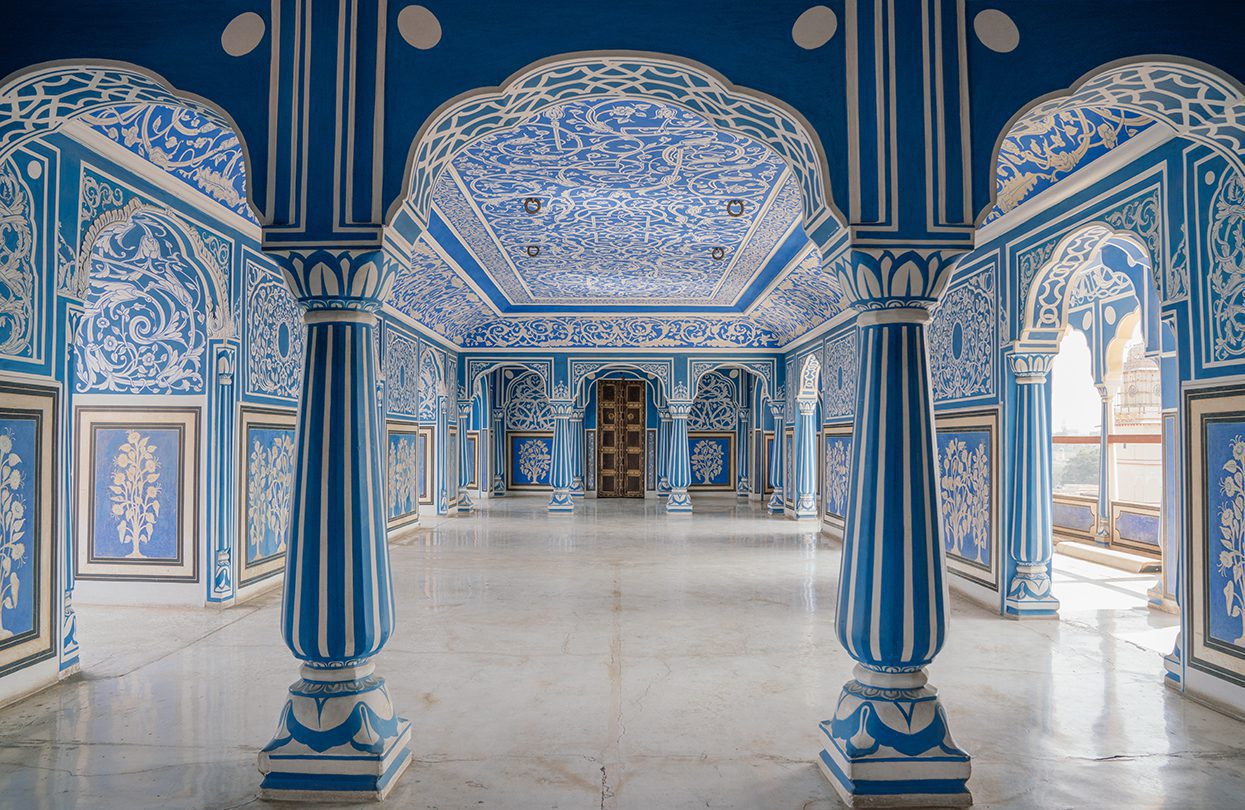
Architecture, Art & Culture
The region has shimmered globally due to its grandeur. The cities’ majestic ruins overlook the ever-changing world with its watchful, silent ramparts and mighty stone walls. In Jodhpur, the lavishness of the old Rajputana still prevails in Mehrangarh Fort built around 1459, whose citadels float 400 feet above the city of blue houses and stark plains. One of the largest forts in India, Rudyard Kipling alluded to it as a work of the giants, and he may be right. Up the hill of Chittar sits the Umaid Bhawan Palace, one of the world’s largest private residences and home of Jodhpur’s royal family, a magnanimous residence carved in blush-coloured sandstone and completed in 1943.
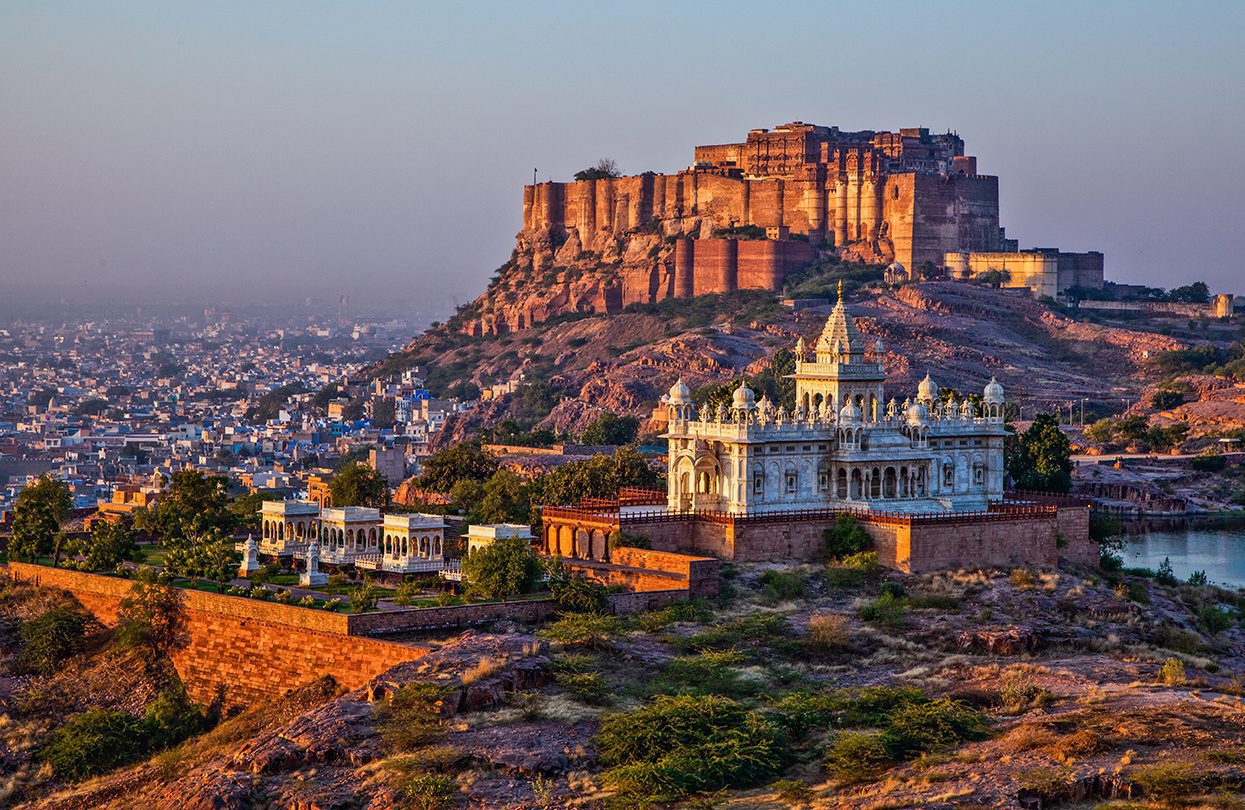
Sunrise at the Mehrangarh Fort and Jaswant Thada Mausoleum with the blue city in the background, by Marcel Toung
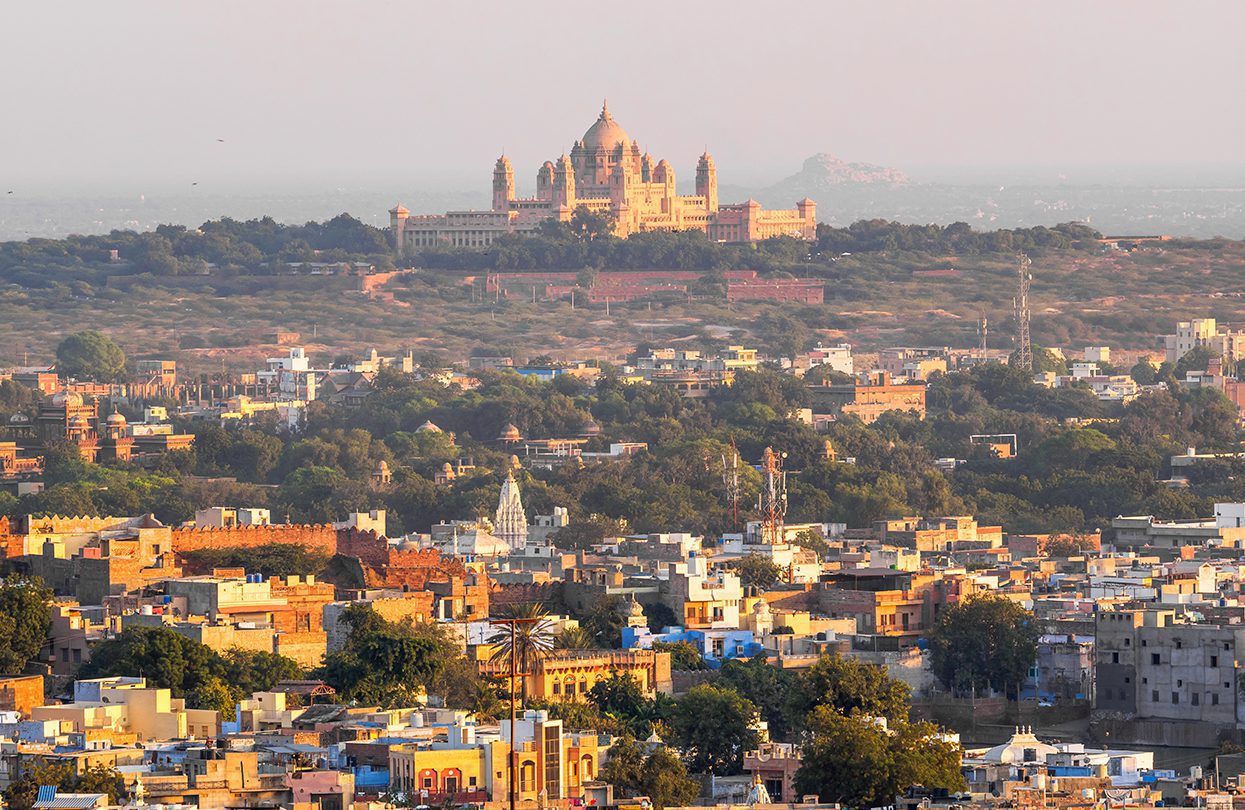
In Udaipur, every extravagant forts turn their gaze to Lake Pichola, a man-made freshwater reservoir made to provide irrigation in the neighbouring regions. The Lake Palace opulently sits on its glassy surface, its entry facing the east to welcome the rising of the sun and its white walls hiding a heavenly getaway within. Built under the rule of Mewar king Maharana Jagat Singh II in 1746, its black and white marble walls were once adorned opulently with semi-precious stones. Pillared terraces and grand columns line its extensive dreamy courtyard.
Endowed with architectural hints from the Rajput and the Mughal, Bada Mahal perches itself on a hillside that overlooks the city of Udaipur, beaming down with ornate walls that look like intricate embroidery. Set beside it, the City Palace, a 16th-century stronghold whose many gateways lead to uncovering the history of the Mewars that ruled the region.
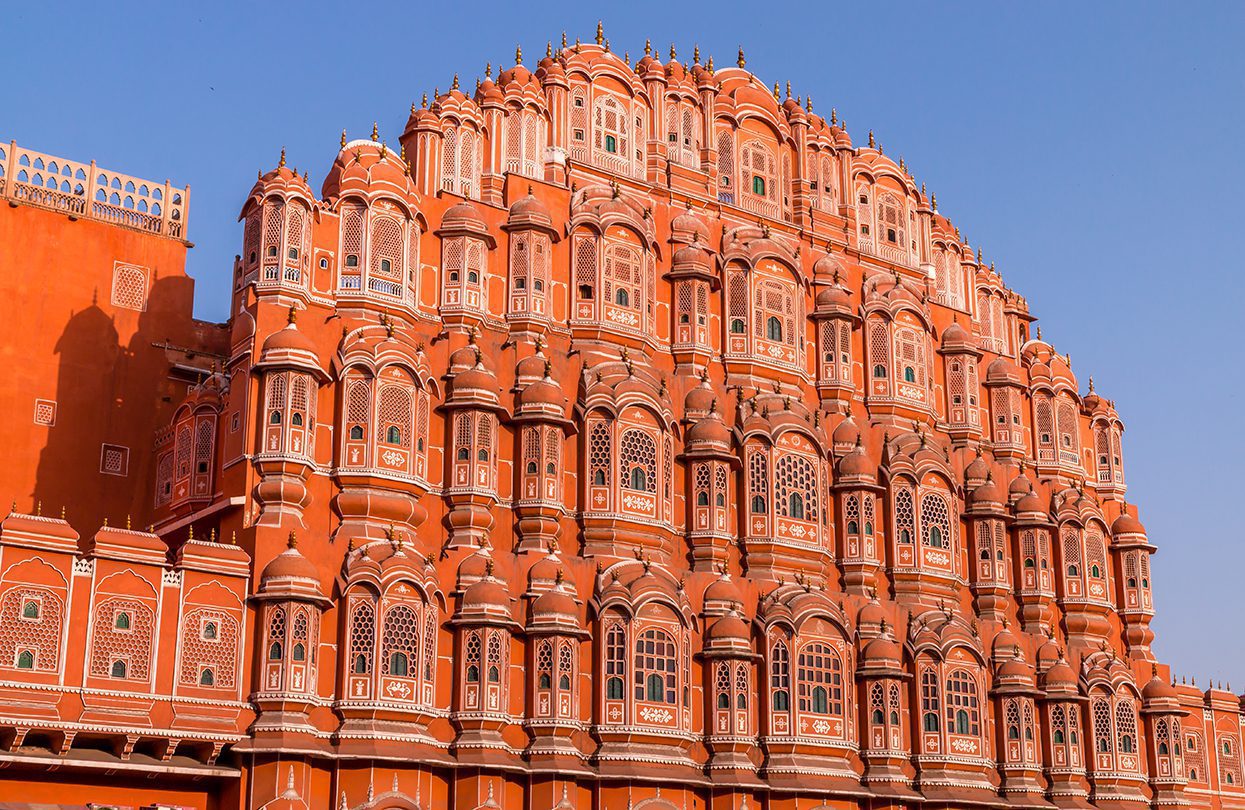
Jaipur, the capital of Rajasthan, is base to a third of India’s Golden Triangle and blushes with a rosy tinge, as seen in Hawa Mahal, an enthralling honeycomb structure flamboyantly made out of red and pink sandstone. The once royal women’s quarters translate to the name “Palace of Breeze,” and is graciously set beside the palatial main landmark of the city. Above the hill guards the formidable Amber Fort, slathered with rose and yellow sandstone, with lofty columns carved with the shape of an elephant and stars latticed galleries overhead. The king’s apartments are lavish on their own–Ganesh Pol is made up of frescoed arches, while the Jai Mandir is built with mirrored ceilings and carved marble relief of flowers. There is no denying that Rajasthan is home to keen craftsmanship, by the way each palatial home is ornate with handmade durries, inlay brass-work, wood carving and sculptures in terracotta.
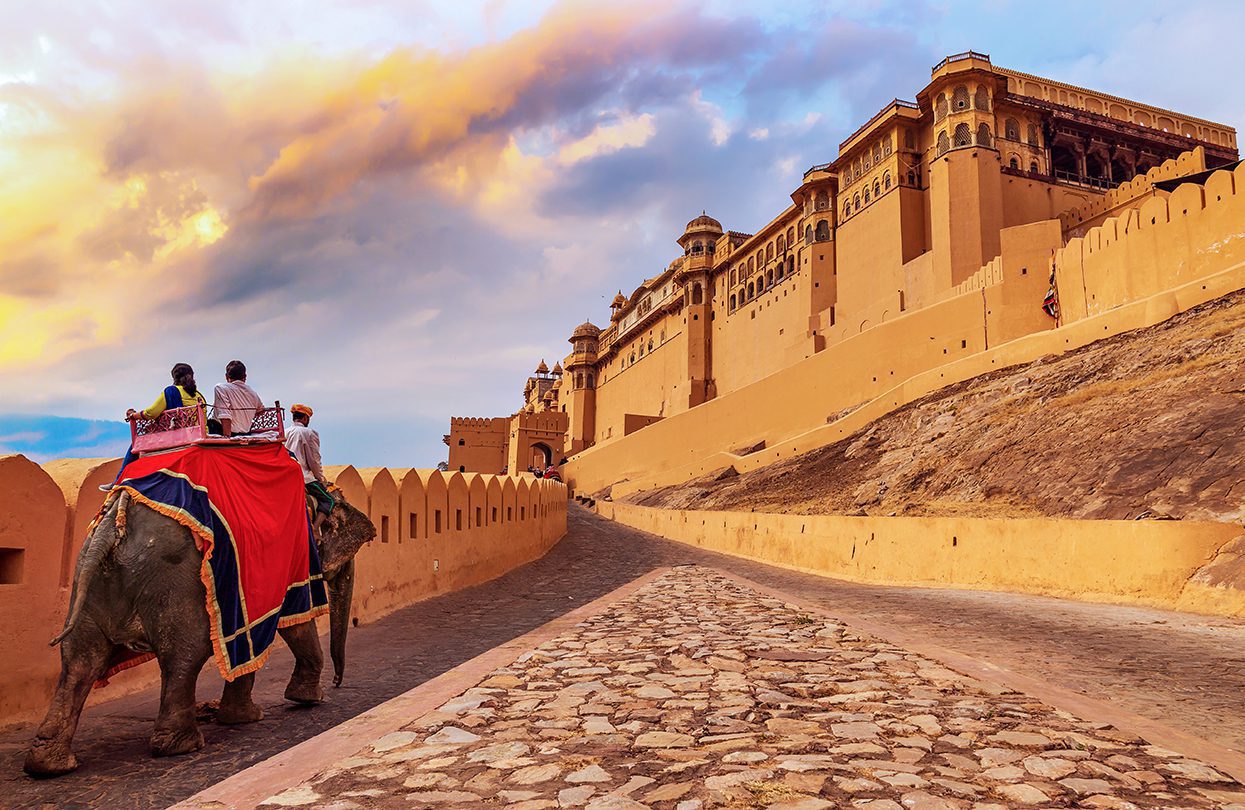
Tourists enjoy an elephant ride at Amer Fort Jaipur, by Roop_Dey
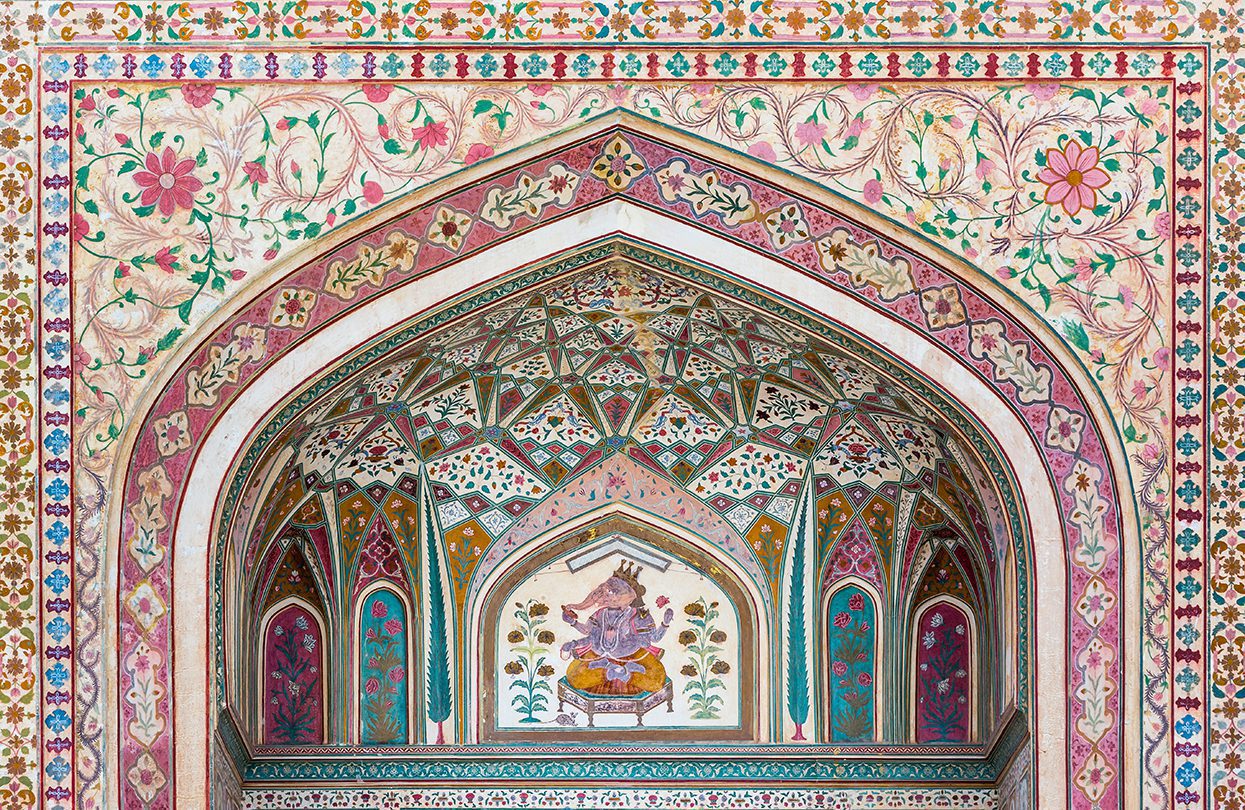
The authentic, aromatic & delicious cuisine
The Rajasthanis, both conquerors and survivors of war, were fuelled by meals from the arid region’s produce, many of which are cooked to last for days and be reheated. The Rajputs were enthusiastic with game meat, and their dishes were laced with thick gravies and exotic aromas, as opposed to the Marwaris, which are firmly vegetarian, and the Mughals, who are known for using almonds, rose water and cream. An amalgamation of these worlds paved opportunities for more exciting flavours. This is seen on Gatte Ki Sabzi—or steamed gram flour—cooked in thick curd and is best paired with ever present roti. Laal Maas is a meaty curry swimming in a sauce of yoghurt and tangy spices, a viand which can be eaten with rice.
The concept of desserts is not applied to a Rajasthani feast, for when it came to sweet dishes, there was no need to wait, sweets are enjoyed on all occasions, all day long. Ghevar, the one sweet that could arguably define the region, is a savoury dish comprised of flour, milk, and ghee, gorgeously sprinkled with saffron, almonds, and pistachios and are served in a disk mould. Imarti is a golden coil resembling a flower made from urad flour and can be nibbled as a snack. Kachori is a deep fried puff-pastry seen all over India, but the Rajasthani version boasts with onions and potatoes, and are complemented with tangy tamarind sauce.
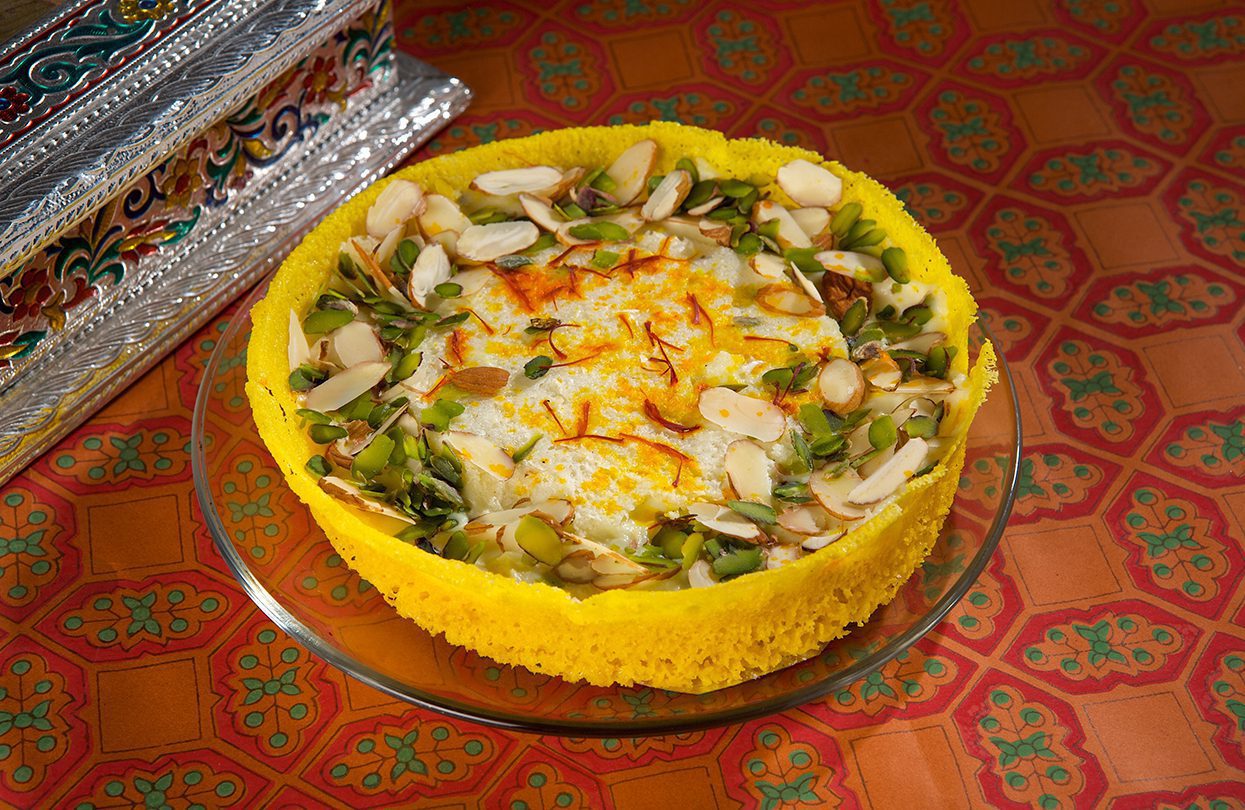
Kesar Ghevar. Exotic Indian desert made with pure ghee, topped with saffron, dry fruits, by picsguru
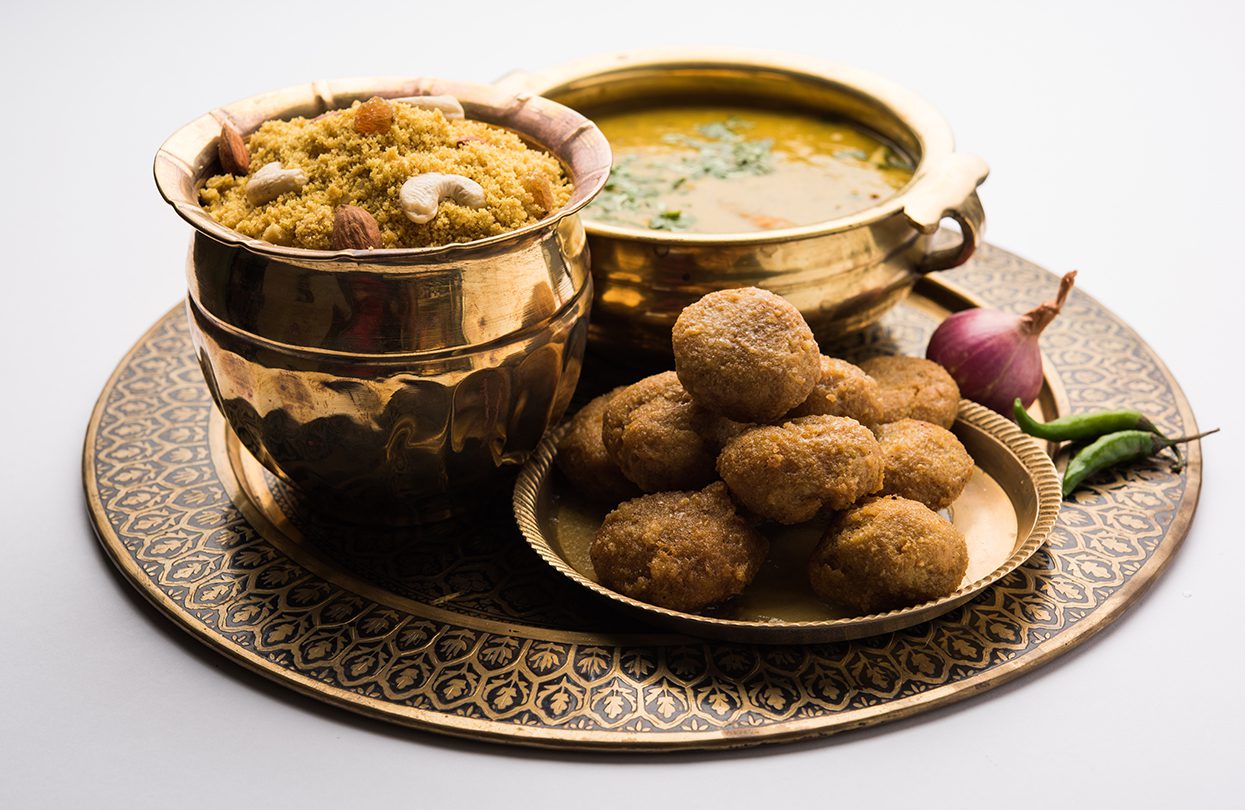
Churma is a signature Rajasthani delicacy ground wheat slathered with gee and then drizzled with sugar, making up a high-calorie treat that is part of a wrestler’s diet, usually served with milk. This is one-third of a popular Rajasthani dish, Dal Bati Churma. Dal is a harmony of different lentils, soaked overnight, while Churma is crushed bati slathered in ghee. The three, together, make a sumptuous meal; a quintessential food for every Rajasthan trip. As the days are spent soaking in the splendours of Rajasthan, the meal times are taken up licking fingers while sampling dishes that delightfully stretch one’s imagination of North Indian cuisines.
Wildlife & the great outdoors
The marvels of Rajasthan prevail in the life that beats in its hidden sanctuaries. In Bharatpur, transient feathered creatures find their way here. The UNESCO World Heritage Site is home to more than 300 families of birds and 30 mammals, including aquatic species that migrate from Siberia, Afghanistan and China. From autumn to winter, rare species flock their way in the bosom of Bharatpur—the glamorous crane, the cordial pelican, the colourful ducks and the adorable wagtails, all crooning together as they land on the banks, where on the ground, the shy Chital, Sambar, and Nilgais similarly thrive.
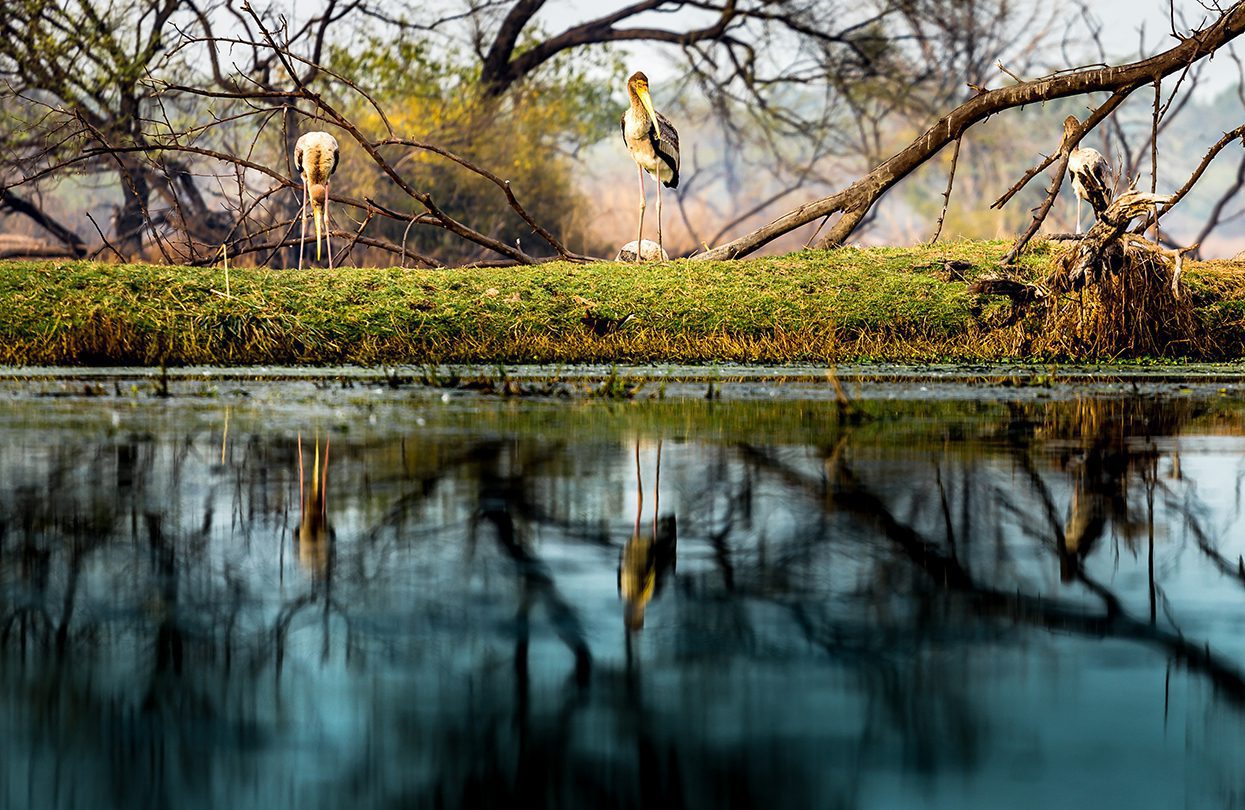
Painted stork bird in forest of Keoladeo national park, Bharatpur, by Ram Kay
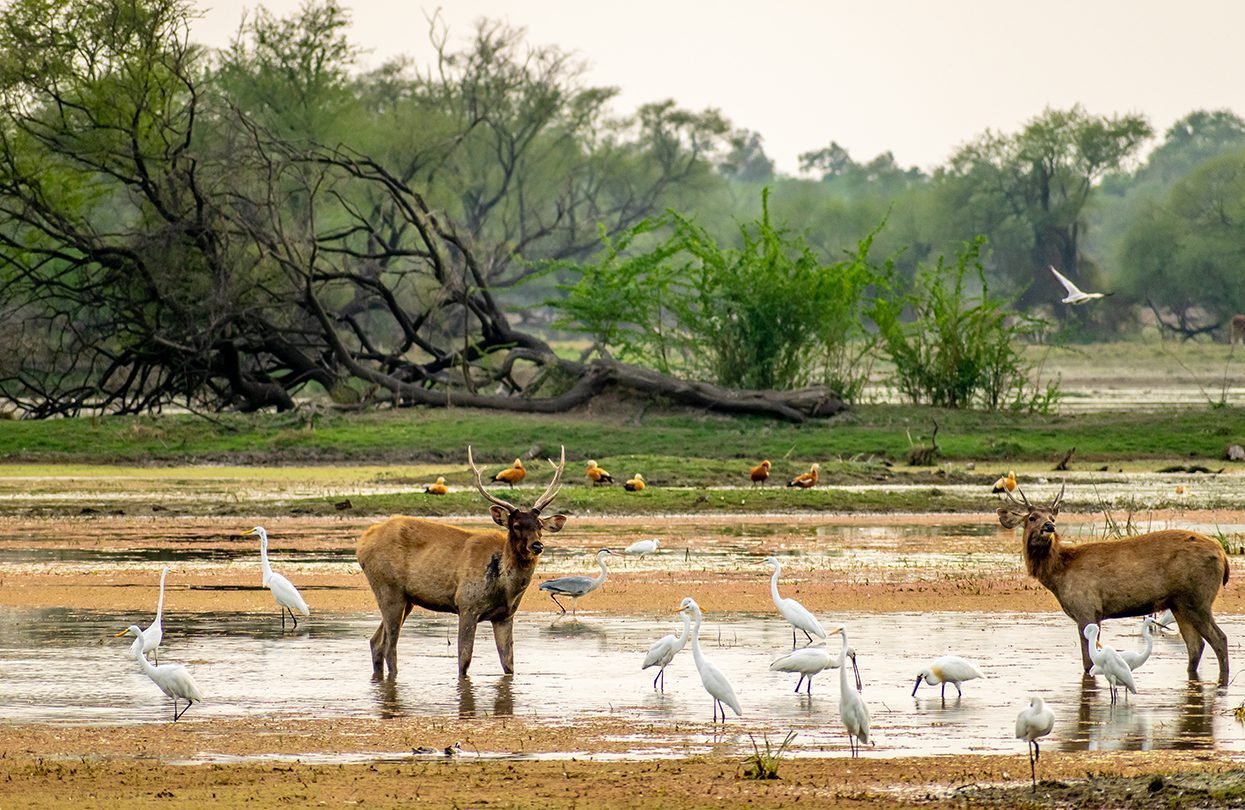
In the sandy dunes of the Thar Desert, where nothing but strong winds and blue skies roll over the horizon, lies a secret deep within its navel, only reached by a slow ride over the ever-faithful camels. From the stark nothingness near Jaisalmer appears the cenotaphs of Bada Baghs, where old kings are buried, and then, sightings of the desert village whose yellow-draped huts shine joyfully like the tropical sun. The two-day journey requires sleeping by the camp, where tents are pitched, and hot chapatis paired with delicious curries are served across a bonfire as the sun sets over the dunes. The silence of the desert is blissful, and so is the night sky. When the morning dawns, it’s time to get on the camel’s back and enjoy a few more vistas–the ornate Jain temple, mud-hats, and places to indulge a first try on hand-loomed textiles.
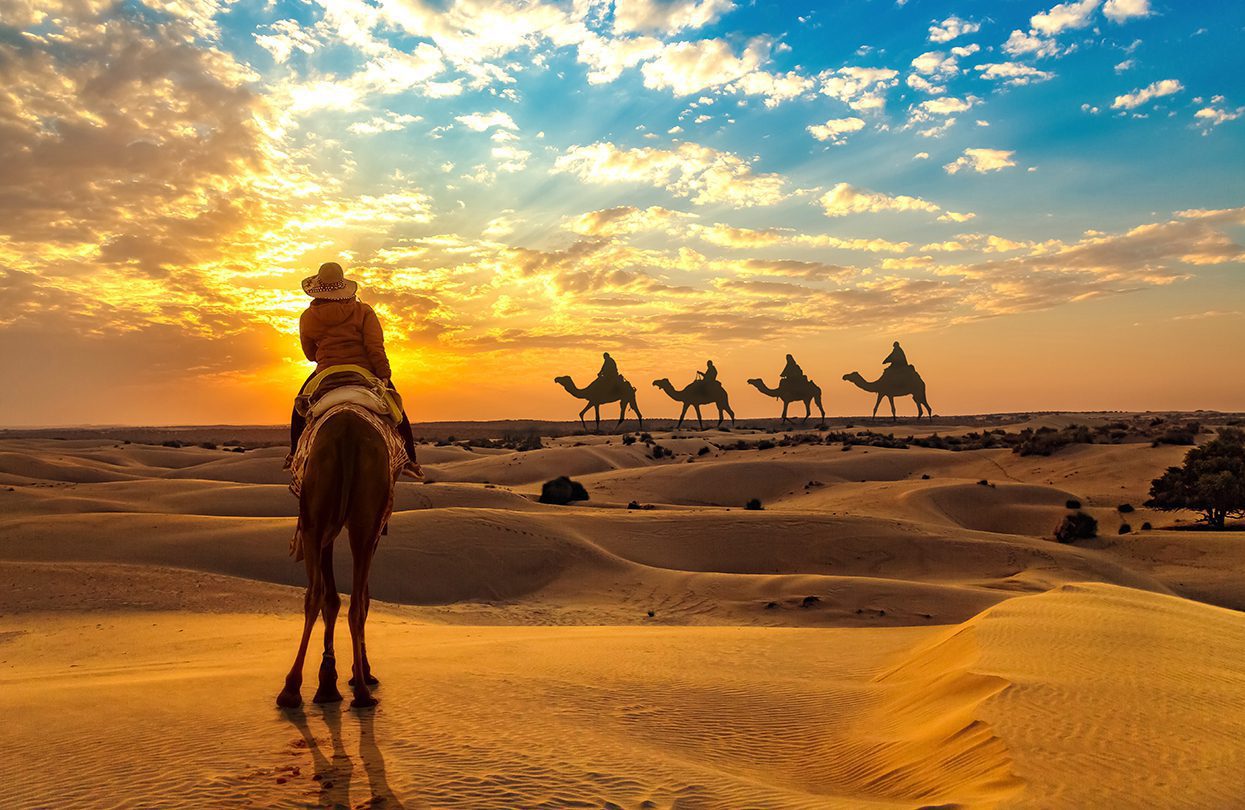
Female tourist on camel safari at the Thar desert Jaisalmer, by Roop_Dey
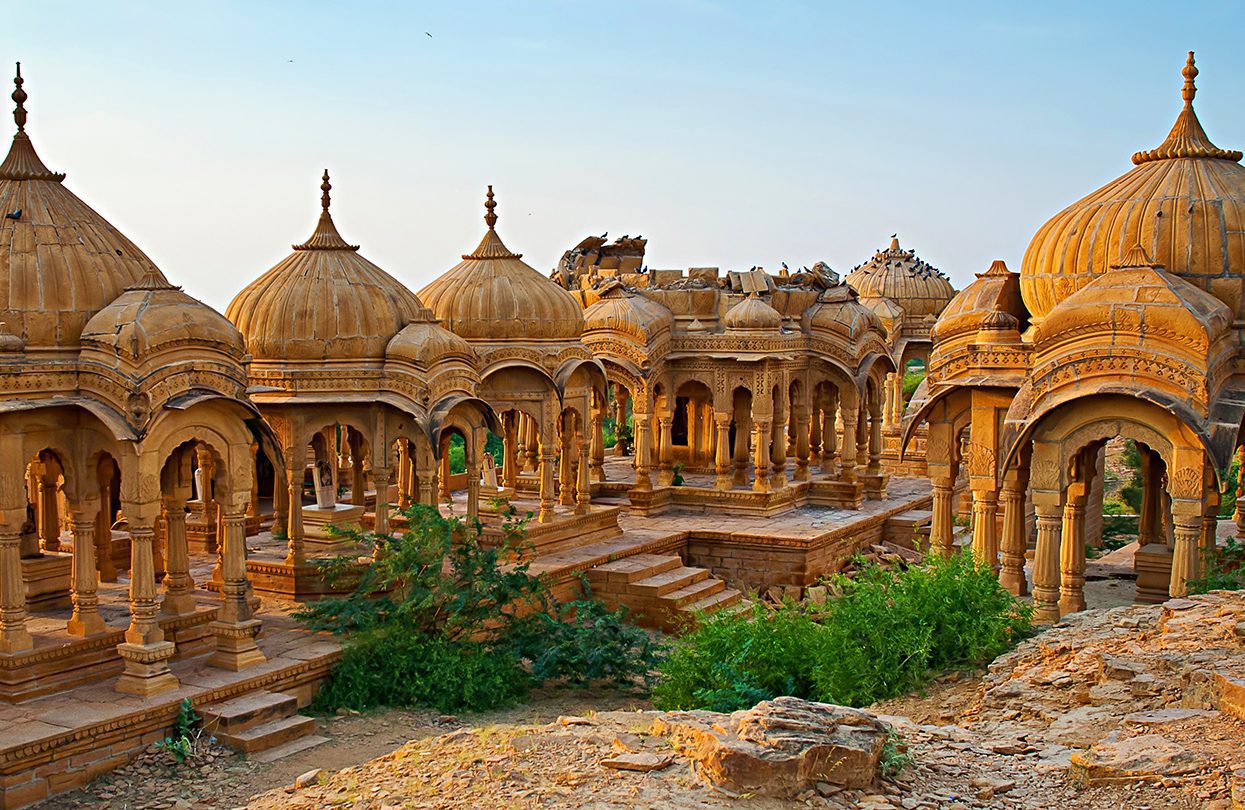
Romping around Rajasthan can only be completed with an adventurous sighting of tigers, the legendary pets of the Rajas. In Ranthambore, one of the largest parks in Northern India, the striped felines prowl through the rich flora that dangles in many hidden heritage sights. As the safari jeep pierces through the rugged terrain, peer into the verdant grounds, and have a camera ready for a quick snapshot of these energetic creatures.
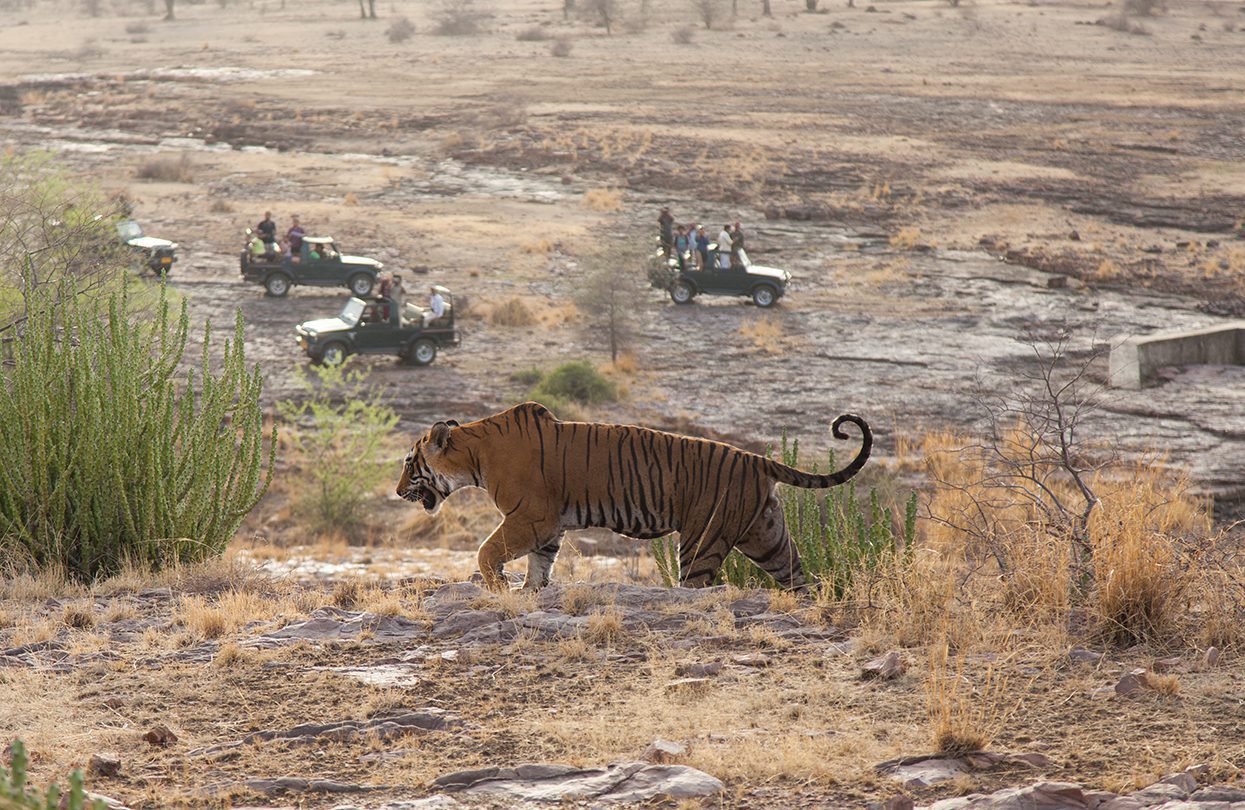
Tourists on safari photograph a wild tiger as it walks through the jungle in Ranthambore National Park, By James Player
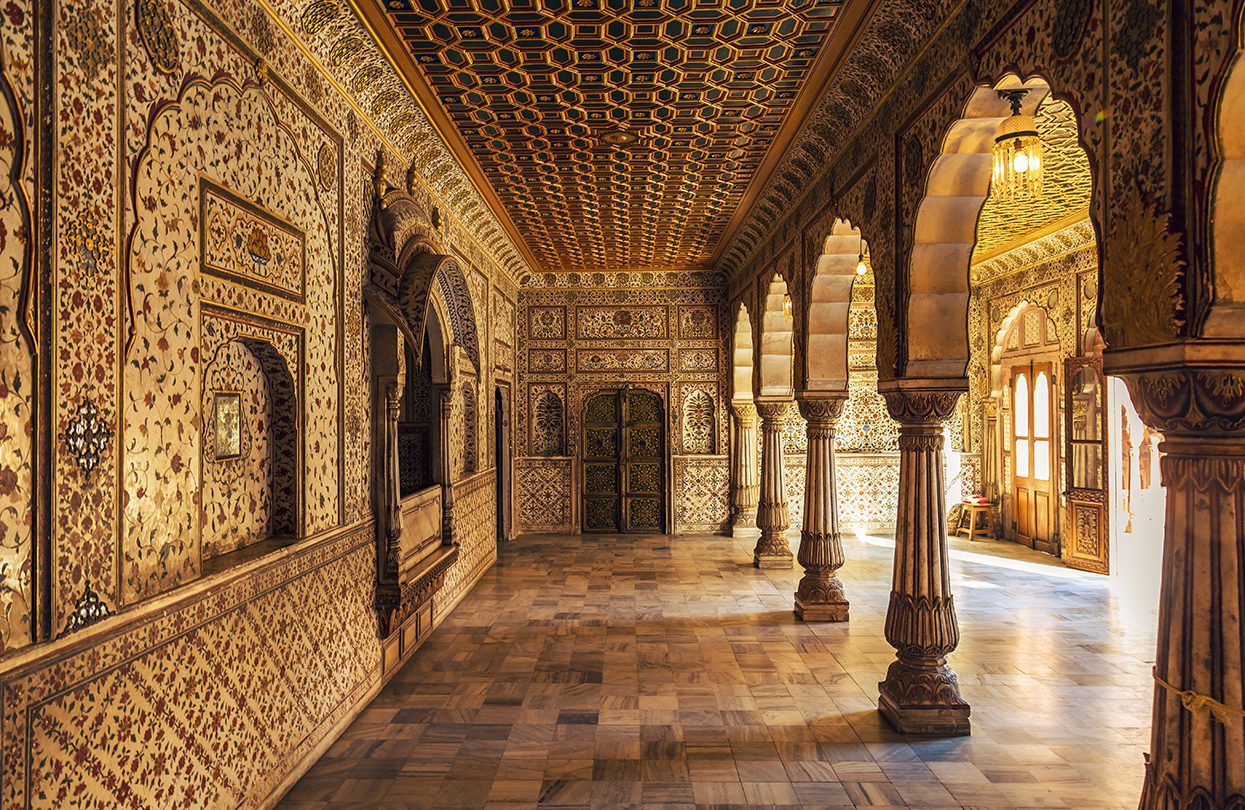
Rajasthan is a benevolent region of many dazzling cities—Jaipur, its capital, indulges with handicraft, precious stones fine dining experiences. Jodhpur is famous for its palatial hotels. Udaipur enchants with its lakeside mansions and glorious temples. Ajmer thrills with the views of the Aravalli Range, and Jaisalmer strikes with the vibrant colour of its Golden City. Inhale Pushkar’s quaint temple town ambience and stroll around Bikaner’s many Instagram-able forts.
Reach Rajasthan through flights from Jaipur International Airport or New Delhi’s Indira Gandhi International Airport. Meandering through its many cities is made convenient through tourist-friendly trains or, for a more indulgent experience, luxury tour vans, ensuring that every hour to the destination is a treat on its own. www.incredibleindia.org 
Subscribe to the latest edition now by clicking here.
© This article was first published online in Nov 2019 – World Travel Magazine.
If you would like to comment on this story or anything else you have seen on World Travel Magazine, head over to our Facebook page or message us on Twitter.
And if you liked this story, subscribe to our bi-monthly World Travel Magazine, a handpicked selection of editorial features and stories from Global Destinations, Inspire Me, Insider, Style File, Wellness & Travel, City Travel, Suite Life, At Leisure, Short Breaks and much more.


